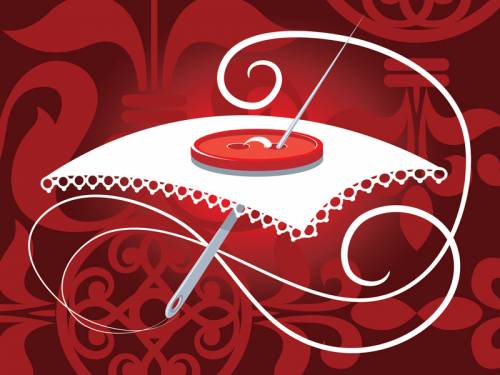What the ‘mending’ trend can teach us about God’s redeeming love
By Donna Frischknecht Jackson | Presbyterians Today
 I hadn’t heard of the “mending” trend until a few months ago. I was skimming the pages of the free newspaper that’s always shoved into my tiny post office box. Published before the pandemic, its pages teemed with news of church fundraising dinners. From chicken and biscuits to pig roasts — who needs restaurants in rural America when there are churches?
I hadn’t heard of the “mending” trend until a few months ago. I was skimming the pages of the free newspaper that’s always shoved into my tiny post office box. Published before the pandemic, its pages teemed with news of church fundraising dinners. From chicken and biscuits to pig roasts — who needs restaurants in rural America when there are churches?
But with social distancing scaling back the number of church dinners, there was room for other announcements, like the one from a local college offering a mending workshop. I wondered, “Do they actually mean mending as in how to sew a button onto a shirt, patch a hole in jeans and darn a sock?” The notion of doing any of these things was foreign to me. I couldn’t remember the last time I took a needle out to repair a piece of clothing. A rip or a missing button were often excuses to throw out the garment and buy new.
Intrigued, I went to register for the workshop only to be shocked to learn it was sold out. My surprise led me to research why mending was becoming so popular. I discovered that the movement to repair what is torn was not necessarily rooted in frugality, but rather out of a growing concern for the environment.
According to the Environmental Protection Agency, in 2017, 11 million tons of textile waste ended up in landfills, taking up to 200 years to decompose. The realization of the importance of reusing fabric has even hit the fashion industry, with couture houses, such as Alexander McQueen, sending down the runway in spring 2020 new lines of clothing made of recycled textiles.
With my big toe poking through the hole in my sock, I was inspired to switch gears and begin researching instructional videos on how to do this thing called “darning.” As my eyes watched yarn being threaded onto a needle in a video, my thoughts drifted to a different kind of mending — spiritual.
I mused about what kind of “holy thread” would be needed by a society torn apart by politics, especially as November’s election revealed how ripped we are as a country. What thread would we need to spiritually stitch us back together: perhaps a thread woven with fibers of grace, compassion, empathy and listening?
I then thought about the extra buttons my grandmother had on hand. They were kept in a cookie tin that always disappointed me when, as a young girl in search of a cookie, I would be greeted by buttons instead. But when my rag doll lost a button eye, I was so happy when my grandmother took out that tin and found a replacement. I wasn’t ready to throw my doll away. Yet how many times have I been quick to toss aside a person because I didn’t have a tin full of extra love and patience to mend what was torn between us?
While the lost art of mending is being found by a new generation, do our congregations have the desire or the skills to master spiritual mending? I ask because I know of too many sessions that are fraying over issues such as virtual worship or racial justice.
I recently came across a Hebrew phrase used in the Jewish tradition when referring to the act of mending: tikkun olam, which means “to repair or improve the world with an act of kindness.” I love the idea of repairing the world by mending, to view something as valuable enough to put it back together and make it usable again.
There’s a passage in Ecclesiastes 3 that tells us everything has a season: “a time to be born, and a time to die; … a time to mourn, and a time to dance.” The writer also tells us that there is “a time to tear, and a time to sew.” It’s time to enter into a new season in which we become skilled at threading our spiritual needles with forgiving, unconditional, inclusive and Spirit-woven thread. It’s time to embrace the art of spiritual mending.
Donna Frischknecht Jackson is editor of Presbyterians Today.
No comments:
Post a Comment